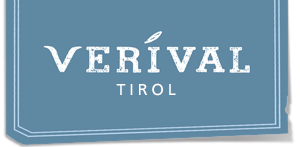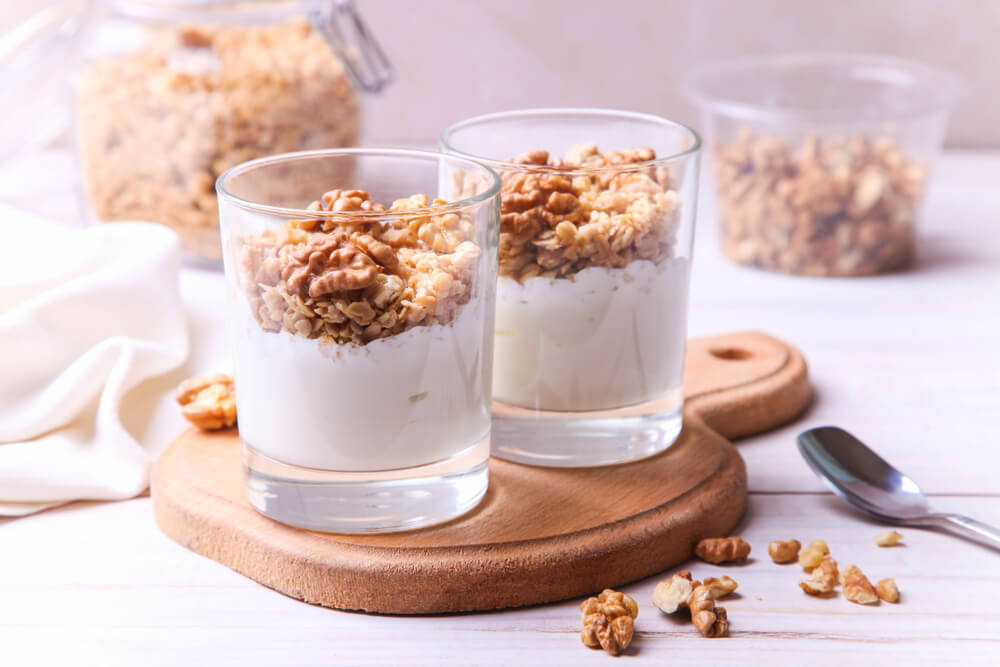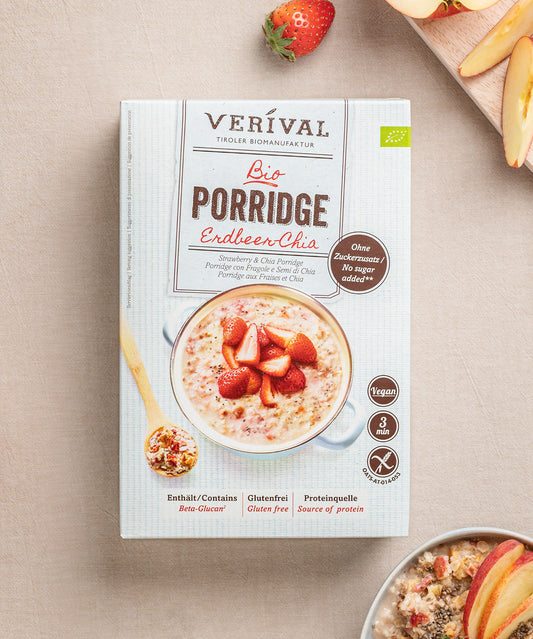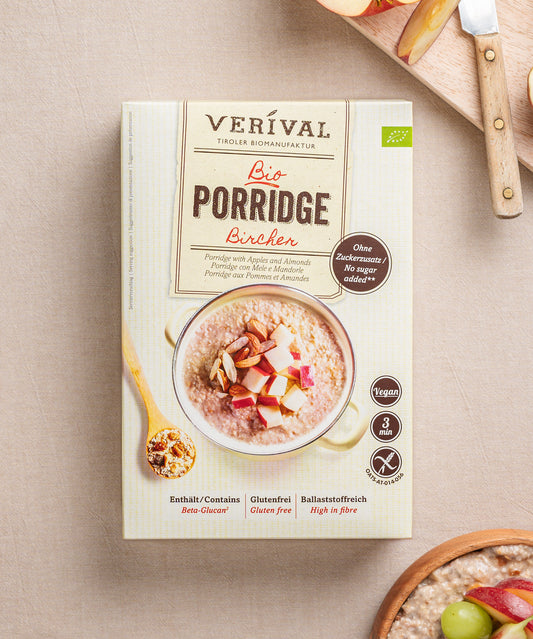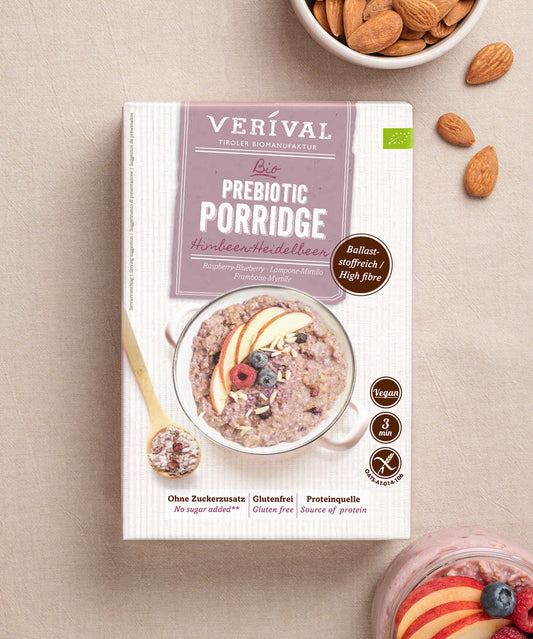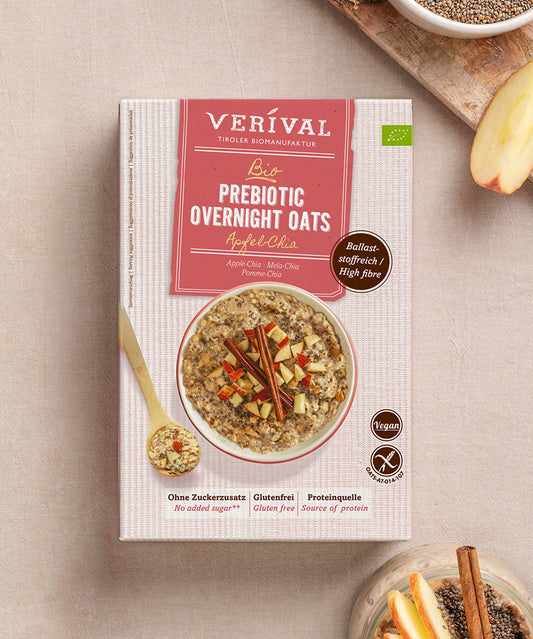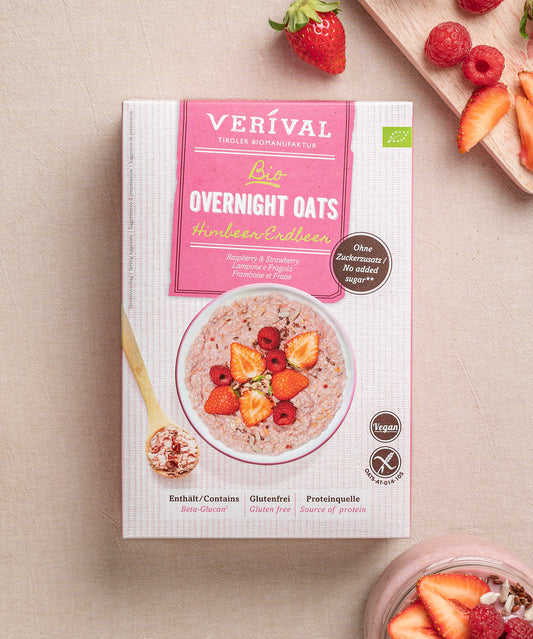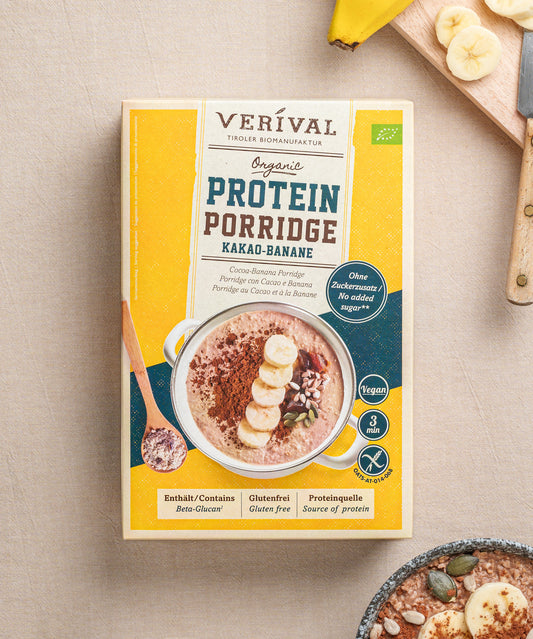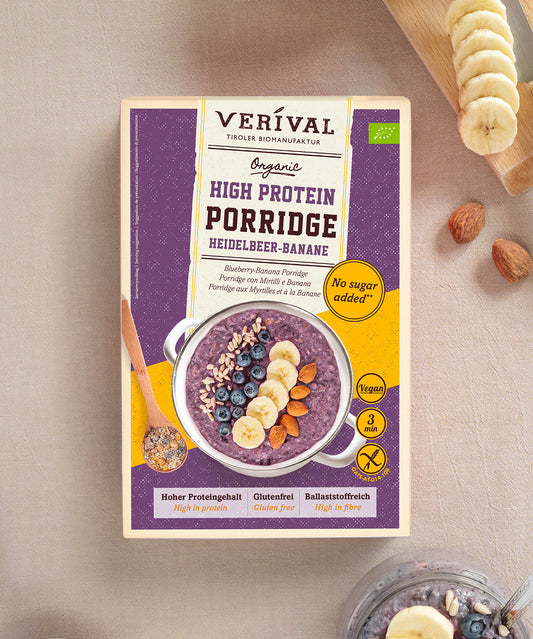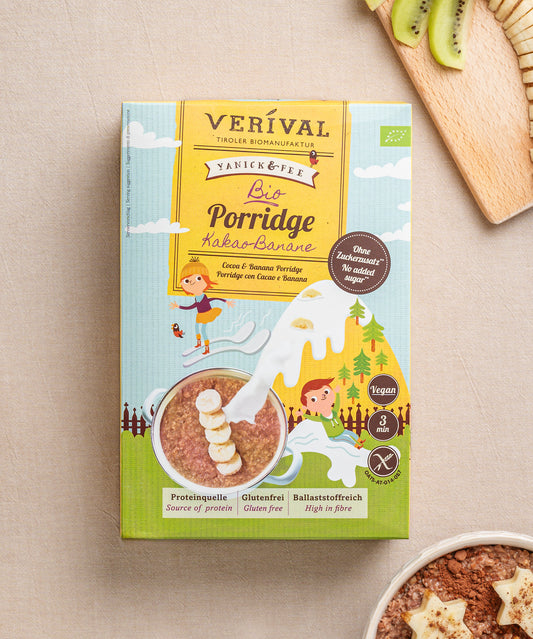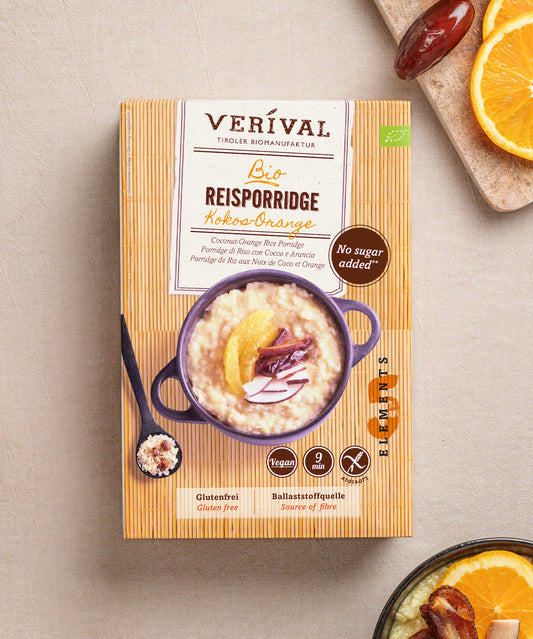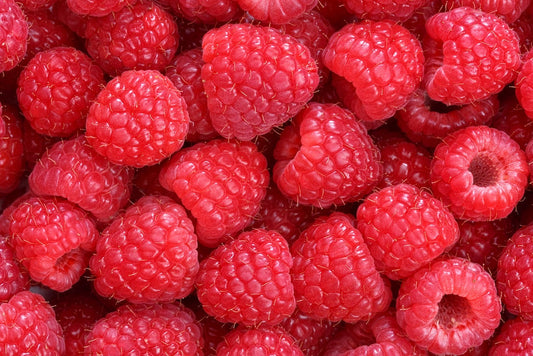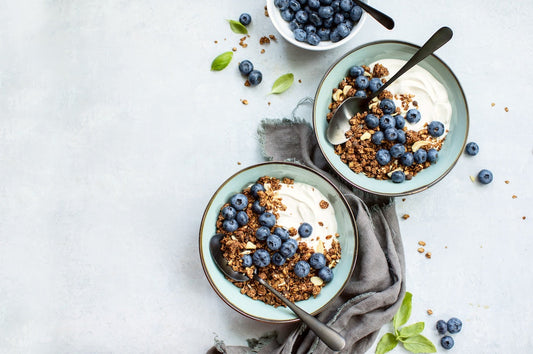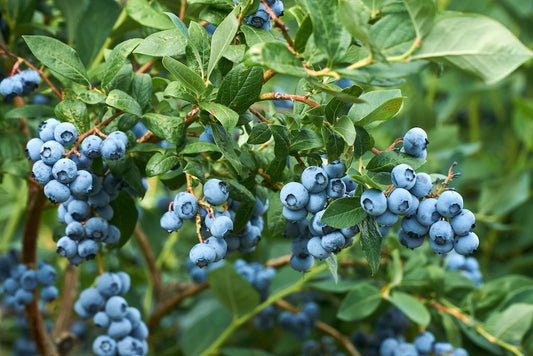Insoluble dietary fiber is an essential part of our diet, the importance of which is often underestimated. This particular type of dietary fiber, which is found in many plant-based foods, plays a crucial role in our health. Not only does it help regulate digestion, but it can also help reduce the risk of a number of health issues.
A high-fiber diet can help improve your overall well-being and is a central part of a healthy lifestyle. Fiber is, in fact, a kind of hidden superfood.
But what exactly are insoluble dietary fibers? How do they work in our body and which foods are rich in them? Let's take a closer look.
Dietary fiber - read more about high-fiber nutrition
What exactly is fiber?
Fiber is a complex carbohydrate found in plant-based foods. It's difficult for the human body to digest, and that's precisely what makes it so beneficial. Due to its indigestible nature, fiber passes through the digestive tract largely unchanged.
On their way through the digestive system, they perform important functions that have a positive effect on our health. Fiber helps regulate blood sugar levels, increases satiety, lowers cholesterol levels and keeps the digestive system healthy. They are an essential part of a healthy diet and should not be missing from any nutrition plan.
Difference between soluble and insoluble fiber
When we talk about fiber, we need to distinguish between two main types: soluble and insoluble fiber. Both types are important for our health, but they work in different ways in the body and therefore have different benefits.
Soluble fiber, also known as water-soluble fiber, can absorb water and swell in the intestines. They form a kind of gel that slows the transport of food through the digestive tract. This has several positive effects: it leads to a lasting feeling of satiety, helps regulate blood sugar levels and can help lower cholesterol. Good sources of soluble fiber include oats, lentils, apples, and blueberries.
Insoluble fiber, also known as water-insoluble fiber, is indigestible and passes through the digestive tract without changing its shape. It acts as a kind of “brush” by stimulating intestinal movement and helping to excrete metabolic waste. This promotes healthy bowel function and can help prevent issues such as constipation or hemorrhoids. Good sources of insoluble fiber include whole grain products, nuts, seeds, and most vegetables.
While both types of fiber are important, this article will focus on insoluble fiber, its role, and its benefits.
Insoluble fiber in detail
The importance of dietary fiber in a healthy diet is widely recognized. However, the specific role that insoluble fiber plays is often overlooked.
Insoluble fiber is a type of dietary fiber that cannot be digested by the human body. Its function is to promote bowel health and aid digestion.
They are mainly found in the cell wall of plants. They consist of long, straight chains of sugar molecules that are strongly linked to each other and therefore have a high resistance to digestion. The main types of insoluble fiber are cellulose and hemicellulose.
Cellulose is the most abundant organic material on earth and forms the structural basis for most plants. It is found in large amounts in grains, vegetables, and fruits, especially in the skins, stems, and leaves of these foods. Cellulose is one of the healthiest food components in the human diet because it increases the volume of stool and stimulates intestinal motility.
Hemicellulose, on the other hand, is a component of the cell wall found near cellulose. It is found in many whole grains, seeds, and nuts. Hemicellulose has similar properties to cellulose, but it can absorb slightly more water, causing it to swell in the intestines and thus help to increase stool volume.
Together, cellulose and hemicellulose form an important part of our diet. They not only ensure the functioning of the digestive system, but also help to maintain intestinal health and prevent a variety of diseases.
Promoting gut health with dietary fiber
Promoting gut health with a high-fiber diet
The role of insoluble fiber in the digestive tract
Insoluble dietary fiber plays a central role in the digestive system. Its main function is to regulate intestinal transit and support healthy bowel function. In doing so, it makes a significant contribution to health and well-being.
Insoluble fiber, which mainly consists of cellulose and hemicellulose, is not digested by the body and therefore passes through the digestive tract almost unchanged. As they pass through the gastrointestinal tract, they bind water and add bulk to the stool. This increases stool volume and facilitates bowel movements, which helps prevent and treat constipation.
In addition, these plant fibers physically stimulate intestinal motility, also known as peristalsis. These wave-like muscle movements push the food bolus through the digestive tract and thus help to maintain regular bowel movements.
In addition, these plant fibers promote a healthy environment in the intestinal flora. They serve as food for the beneficial intestinal bacteria and thus contribute to the health of the intestinal mucosa. A healthy gut is essential for overall physical health, as it plays an important role in the absorption of nutrients, immune defense and disease prevention.
Build intestinal flora - learn more!
Health benefits of insoluble fiber
Insoluble fiber has a range of health benefits that go far beyond its best-known role of aiding digestion. Due to its special properties, it helps to prevent and treat various health issues.
They speed up the passage of food through the intestines, which reduces the contact time of potentially harmful substances with the intestinal mucosa. They also bind to certain carcinogenic substances and thus help to remove them from the body. Insoluble fiber thus has a protective effect in relation to bowel cancer.
Insoluble dietary fibers are also beneficial for the cardiovascular system. They can help lower cholesterol levels (by binding cholesterol and bile acids), which in turn reduces the risk of heart disease.
In addition, studies have shown that a high-fiber diet can reduce the risk of diabetes mellitus (especially type 2 diabetes). This is partly because fiber slows the absorption of sugars into the bloodstream, helping to stabilize blood sugar levels. In particular, the dietary fiber beta-glucan (which is a mainly water-soluble fiber) from oats has been shown in studies to have a demonstrable effect on blood sugar in people with type 2 diabetes.
Oats – discover all the benefits!
Food and dietary fiber
A selection of foods that are generally high in fiber
Different foods have different fiber contents. In addition, foods usually contain a combination of soluble and insoluble dietary fiber, or the ratio varies. Here are some examples of foods that are generally high in fiber:
- Legumes: beans, lentils, peas, etc.
- Whole grains and whole grain products: whole wheat bread, whole wheat pasta, bran (oat bran, wheat bran),...
- Vegetables and fruits: Jerusalem artichokes, artichokes, carrots, apples, especially when eaten raw and with the peel, bananas ( Are bananas healthy?),...
- Nuts and seeds: almonds, flax seeds,...
Remember to consume a diverse range of high-fiber foods for the best health benefits.
Which foods are the main sources of insoluble fiber?
Consciously incorporating foods rich in insoluble fiber into your daily diet is an effective way to promote overall health and well-being. Insoluble fiber is found in a variety of plant-based foods.
Some of the best sources are:
- Legumes: green beans, lentils, and peas are excellent sources of insoluble fiber. They are also high in protein and other important nutrients.
- Whole grains: foods such as whole wheat bread, oatmeal, whole wheat pasta, and brown rice contain high amounts of fiber, both soluble and insoluble.
- Vegetables: Many vegetables, including artichokes, carrots, spinach, sweet potatoes, and brussels sprouts, are high in insoluble fiber. Eating vegetables with the peel on can increase the fiber content. Mushrooms provide mostly insoluble fiber.
- Fruit: While fruit generally provides soluble fiber, some fruits, especially when eaten with the peel, also contain a good amount of insoluble fiber.
- Nuts and seeds: Nuts and seeds, such as almonds and flax seeds, are another excellent source of fiber.
It is important to note that cooking and processing foods can alter their fiber content. Raw or minimally processed foods tend to contain more fiber than heavily processed or cooked foods, so it's best to choose raw, unprocessed foods whenever possible.
Including these high-fiber foods in your diet can help you meet your daily fiber needs and take full advantage of the health benefits that fiber offers.
How do you get your daily fiber?
Getting enough fiber is crucial for our health. But how can we ensure that we are getting enough?
The German Nutrition Society (DGE) recommends that adults consume at least 30 g of fiber daily. However, it can be challenging to achieve this in our daily lives.
A good starting point is to focus on a balanced diet that is rich in plant-based foods. Fruits, vegetables, legumes, whole grains and nuts are excellent sources of fiber and should be a regular part of your diet.
Verival products can be an excellent way to meet your fiber needs. From high-fiber mueslis and granolas to oats and cereal bars, Verival offers a variety of options for increasing your daily fiber intake.
Aim to eat at least five portions of fruit and vegetables a day and always choose wholegrain options when it comes to cereals. A bowl of Verival muesli or porridge for breakfast can go a long way to meeting your fiber needs. The nuts and seeds found in these products can also be a good addition, for example as a topping for salads or yoghurts.
Remember that fiber binds water, so it is important to make sure you drink enough fluids when eating a high-fiber diet!
Finally, be patient with yourself. If you have been eating little fiber, increase your fiber intake gradually to give your body time to adjust. With the right foods, including Verival products, and these tips, you should be able to meet your daily fiber needs and thus support your health. Do you already know our high-fiber recipes?
Discover high-fiber recipes for a healthy diet.
Final thoughts – a conclusion
Insoluble fiber is an essential part of a healthy diet. It supports our digestion, helps to prevent various diseases and improves our general well-being. A high-fiber diet is one of the simplest and most effective ways to promote our health.
Thanks to brands like Verival, it's easier than ever to incorporate high-fiber foods into our daily meal plans. Verival offers a variety of products rich in insoluble fiber, from muesli and oats to crunchy nuts and seeds.
Don't forget to consume a variety of high-fiber foods to get the best health benefits. With the right foods, like those from Verival, and a little planning, it's easy to meet your daily fiber needs and support healthy digestion.
FAQs about insoluble fibre
What is insoluble fibre?
Insoluble fiber is a type of dietary fiber that cannot be digested by our body. It is found mainly in the cell wall of plants and helps to support digestion and promote gut health.
Why is insoluble fiber important for health?
Insoluble fiber helps regulate bowel movements, helps prevent and treat constipation, and may help reduce the risk of several diseases, including colon cancer and cardiovascular disease.
What foods contain high amounts of insoluble fiber?
Many plant-based foods contain insoluble fiber. These include whole grains, legumes, nuts and seeds, and many vegetables and fruits.
What is the difference between soluble and insoluble fiber?
The distinction is based on solubility in water, which influences the properties and functions of the respective dietary fiber. Pectins, inulin, mucilages and gums are soluble dietary fibers. They are also referred to as swelling agents because they store large amounts of water and swell in the intestine. This results in gel-like compounds, which are largely broken down in the large intestine. Soluble fibers thus ensure regular bowel movements and promote the excretion of toxins. Some soluble fibers are also prebiotics. This means that they serve as “food” for positive intestinal bacteria and thus contribute to a healthy intestinal flora. Insoluble dietary fiber includes cellulose and its accompanying substance, hemicellulose. These fibers, also known as bulking agents, bind significantly less water and are hardly broken down by intestinal bacteria. This ensures a long-lasting feeling of satiety and stimulated intestinal activity, which in turn promotes digestion and excretion.
How can I meet my daily fiber requirement?
The daily requirement of dietary fiber can be met by a balanced diet that is rich in whole grain products, legumes, fruits and vegetables, as well as nuts and seeds. The German Nutrition Society recommends a daily intake of at least 30 grams of fiber.
